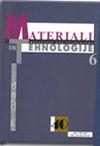用不同尖端几何形状的CBN刀片加工Al6061合金时,用多目标决策方法预测最优参数
IF 0.6
4区 材料科学
Q4 MATERIALS SCIENCE, MULTIDISCIPLINARY
引用次数: 0
摘要
研究了不同条件下加工Al6061合金时,刀具刃口几何形状对切削力和表面光洁度的影响。利用定制的倒角切削刀片进行了一系列实验,观察了进给量和切削深度对切削力和表面光洁度的影响。结果表明,改变尖端几何形状对切削力的控制有显著影响。此外,随着进给量和切削深度的减小(在高切削速度下),观察到表面粗糙度随着几何效应而减小。此外,在本工作中,还基于灰色关联分析(GRA)的多准则决策方法对实验结果进行了验证。加权GRA预测了两种不同刀具刀片加工参数的最优组合。最后,将得到的最优结果与加权GRG的预测值和实验值进行了比较。结果表明,使用标准刀具加工Al 6061合金时,无明显改善,而使用倒角刀具加工Al 6061合金时,净改善率为16.9%。本文章由计算机程序翻译,如有差异,请以英文原文为准。
PREDICTING THE OPTIMAL PARAMETERS BY MULTI-OBJECTIVE DECISION MAKING WHILE MACHINING AN Al6061 ALLOY USING CBN INSERTS WITH DIFFERENT CUTTING-EDGE GEOMETRIES
The present work aims to investigate the effect of cutting-tool edge geometry on cutting force and surface finish while machining an Al6061 alloy under different conditions. A series of experiments was performed with a custom-fabricated cutting insert of a chamfered edge to observe the effect of feed rate and depth of cut on the cutting forces and surface finish. The results showed that varying the cutting-edge geometry has a significant effect on controlling the cutting forces. Also, as the feed and depth of cut were reduced (at high cutting speeds), the surface roughness was observed to reduce with the geometry effect. Furthermore, in the present work validation of the experimental results were also performed based on a multi-criteria decision-making method called Grey Relational Analysis (GRA). The weighted GRA predicted the optimal combination of machining parameters for two different cutting-tool inserts. Finally, the obtained optimal results were compared with the predicted and experimental values in terms of weighted GRG. The result shows that there was no significant improvement while using the standard cutting tool, whereas a net improvement of 16.9 % was observed while using the chamfered cutting tool for machining the Al 6061 alloy.
求助全文
通过发布文献求助,成功后即可免费获取论文全文。
去求助
来源期刊

Materiali in tehnologije
工程技术-材料科学:综合
CiteScore
1.30
自引率
0.00%
发文量
73
审稿时长
4-8 weeks
期刊介绍:
The journal MATERIALI IN TEHNOLOGIJE/MATERIALS AND TECHNOLOGY is a scientific journal, devoted to original papers and review scientific papers concerned with the areas of fundamental and applied science and technology. Topics of particular interest include metallic materials, inorganic materials, polymers, vacuum technique and lately nanomaterials.
 求助内容:
求助内容: 应助结果提醒方式:
应助结果提醒方式:


